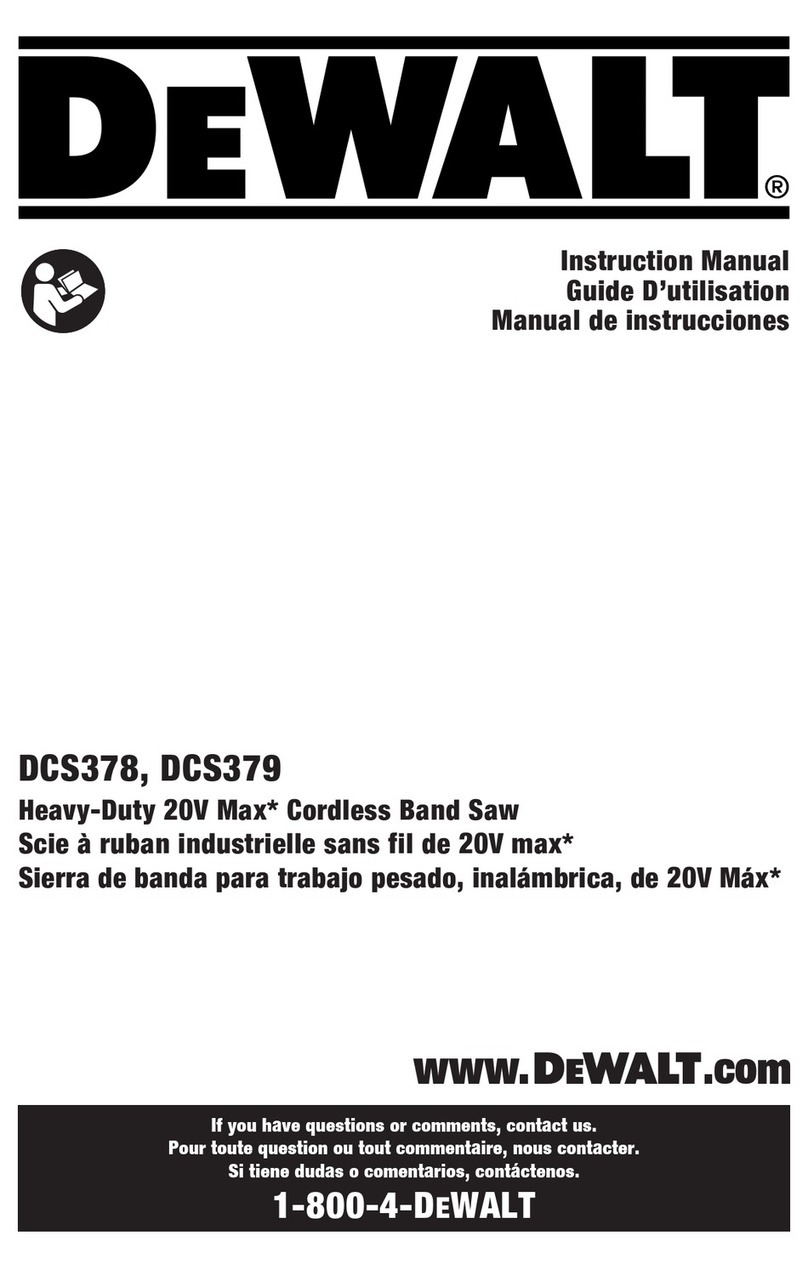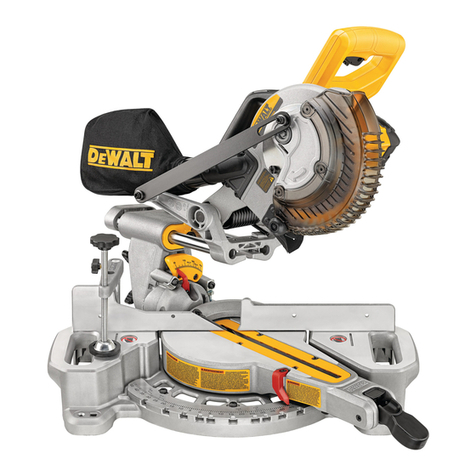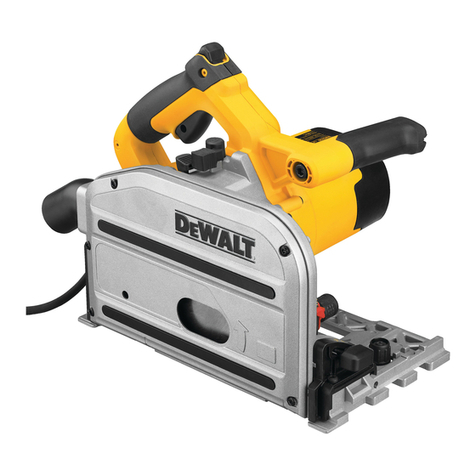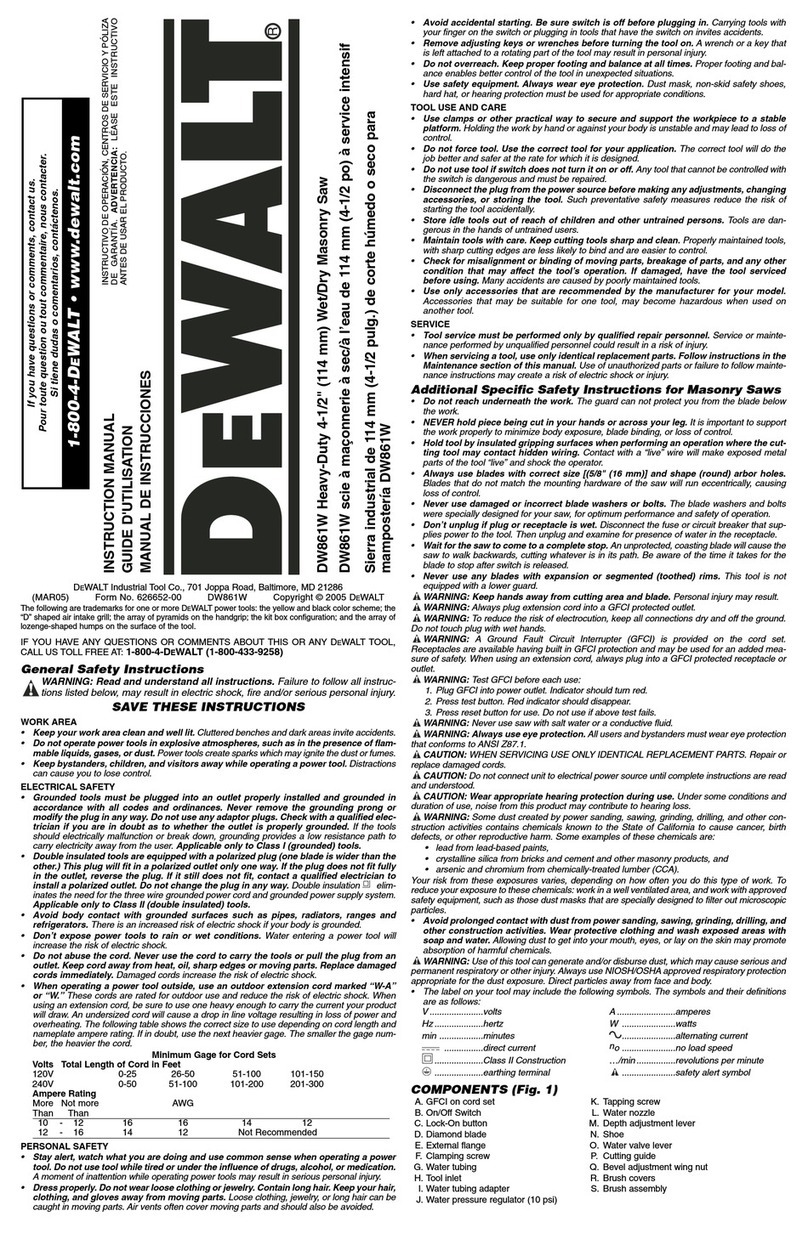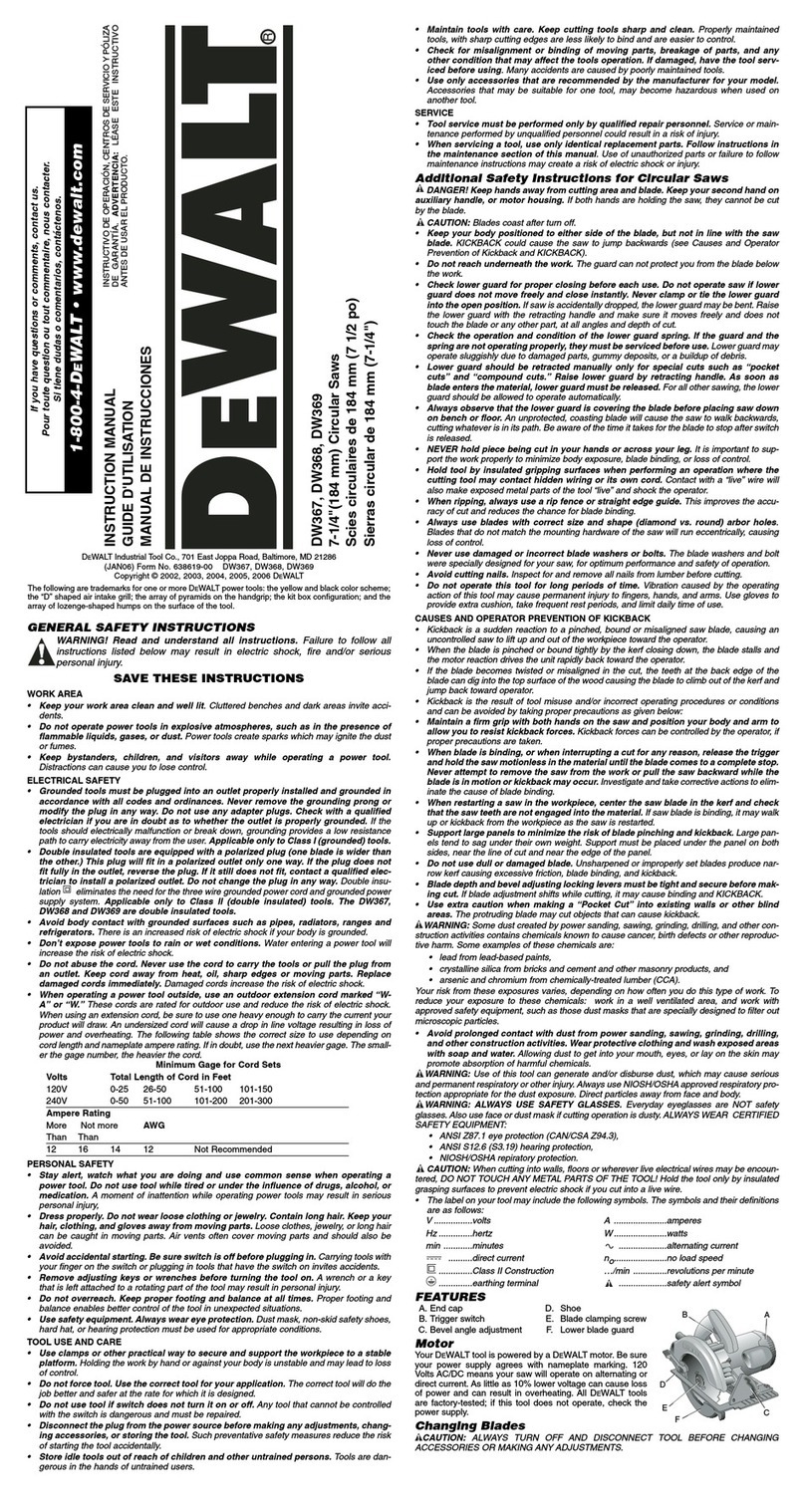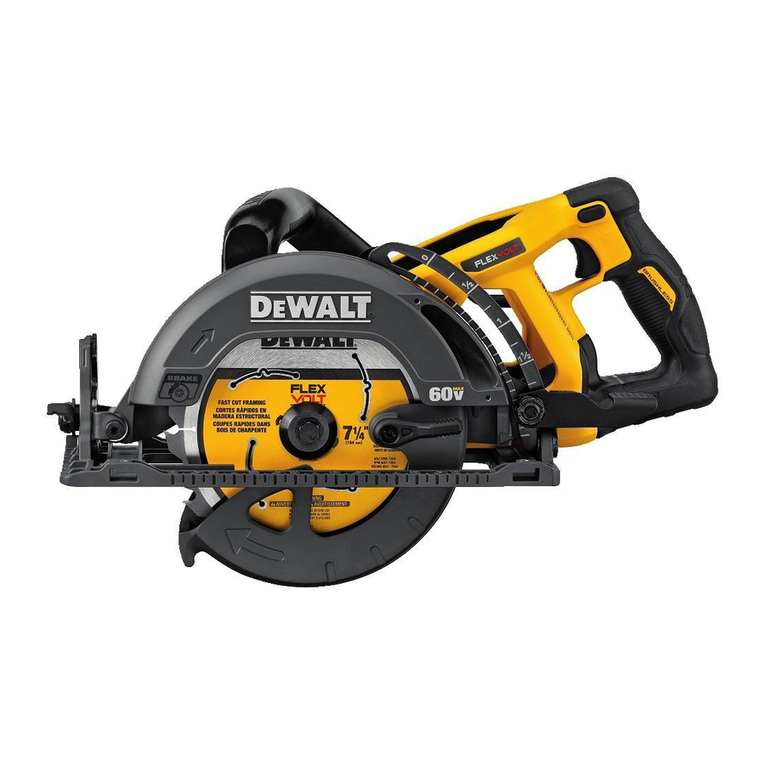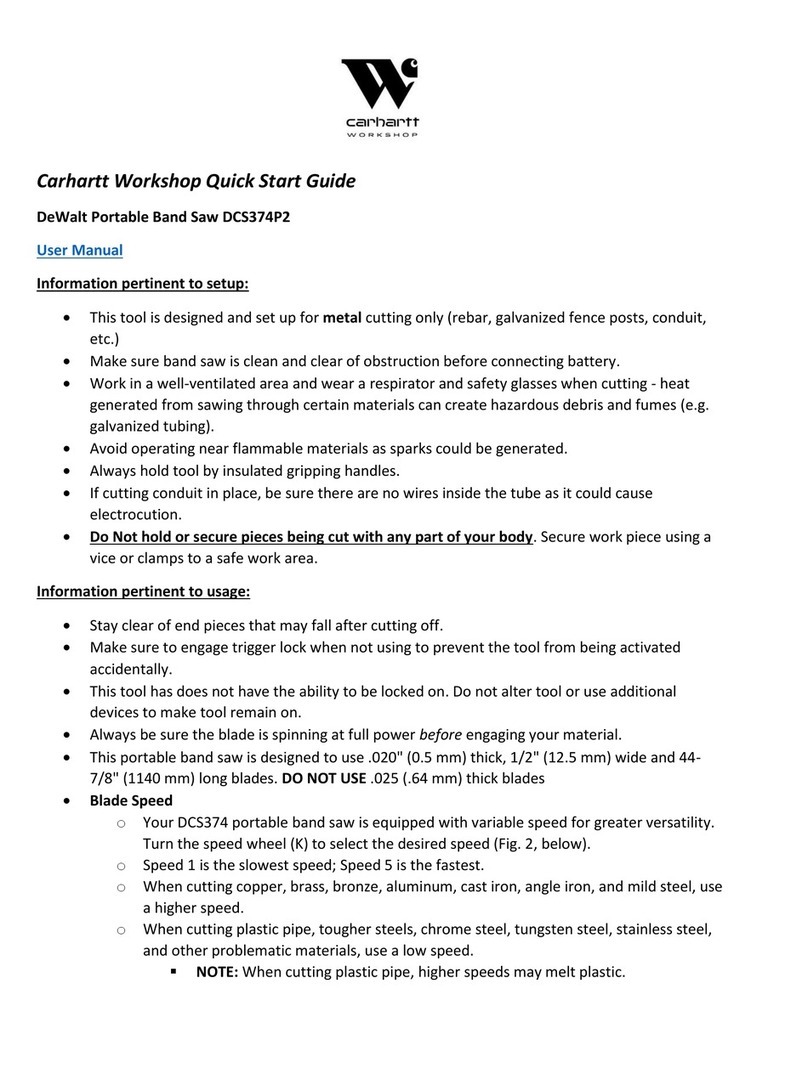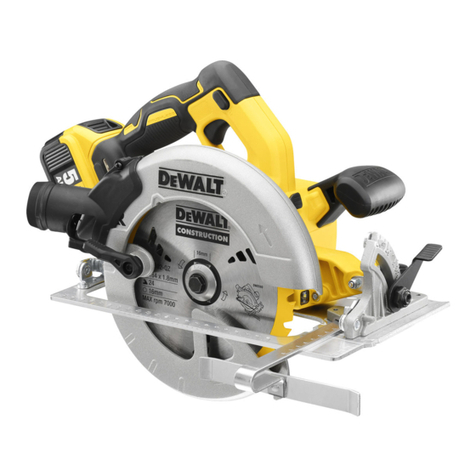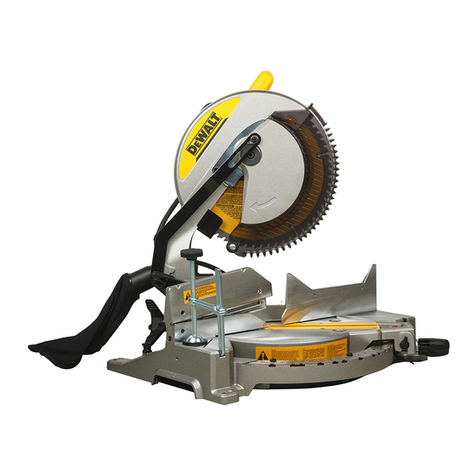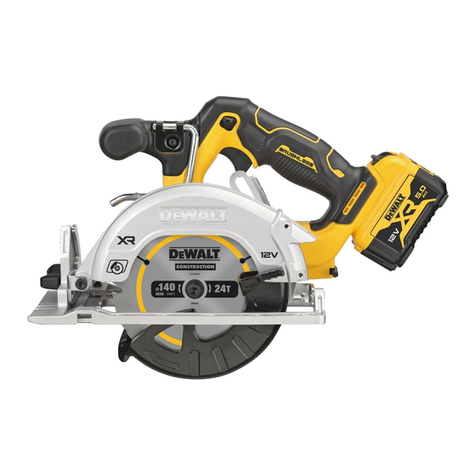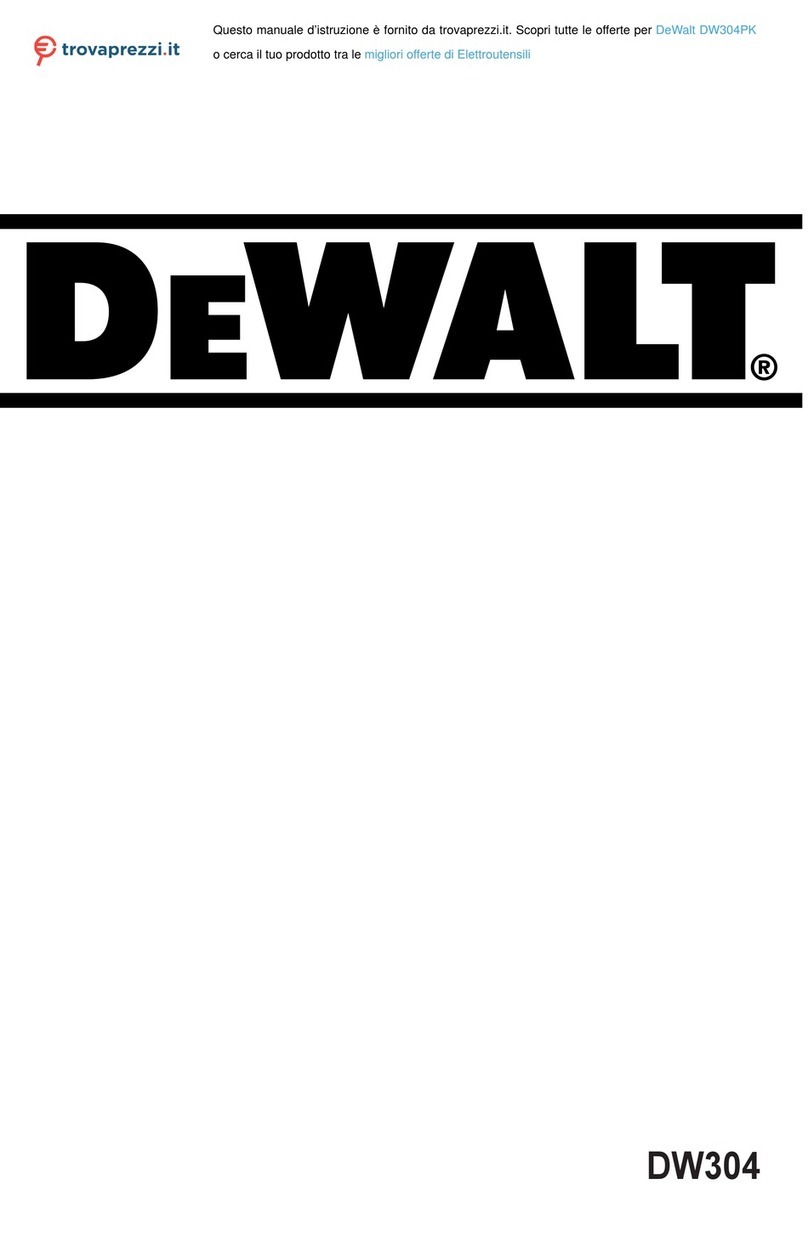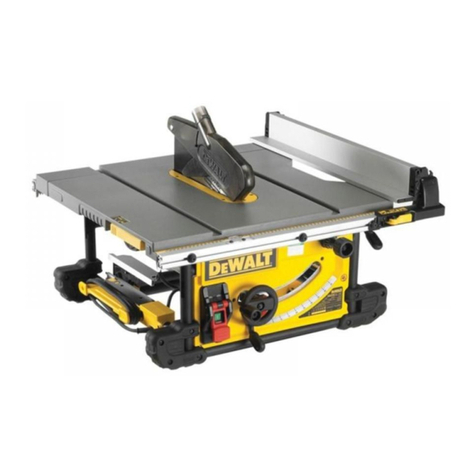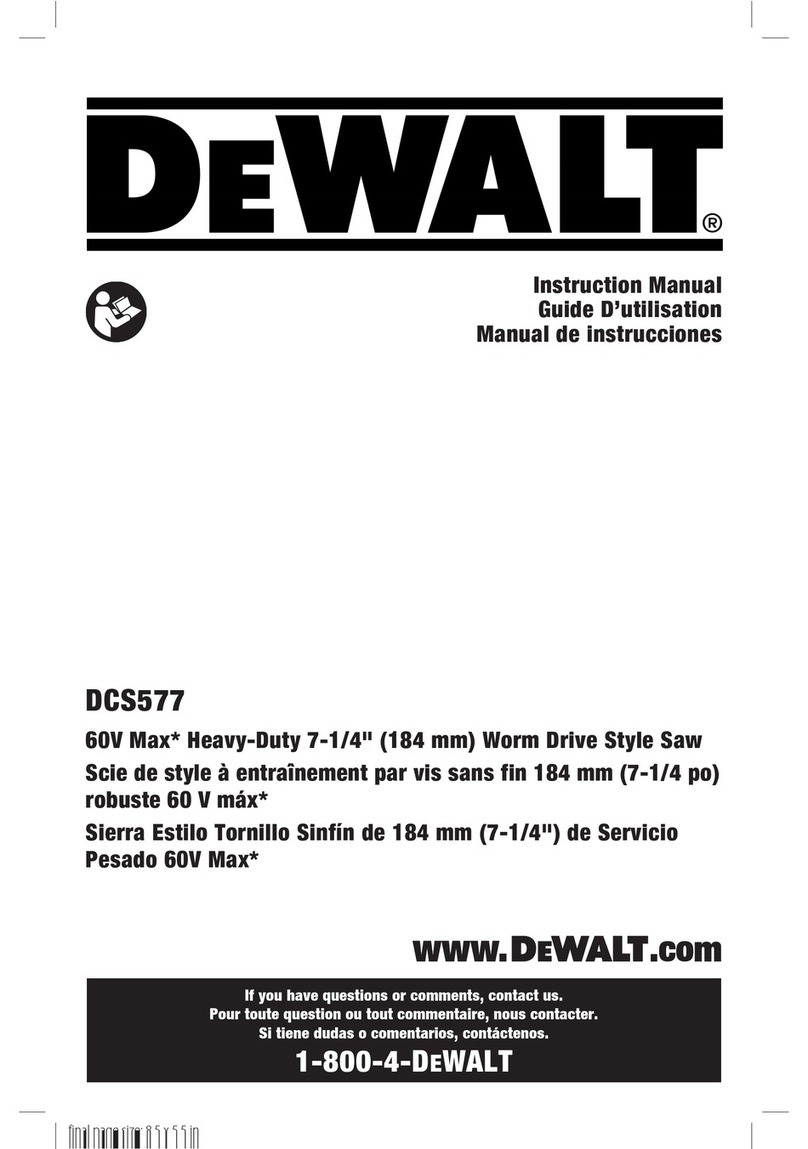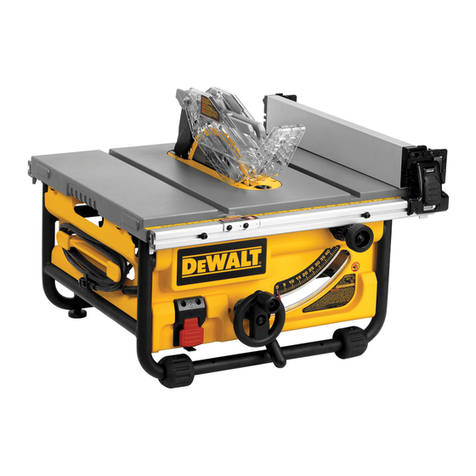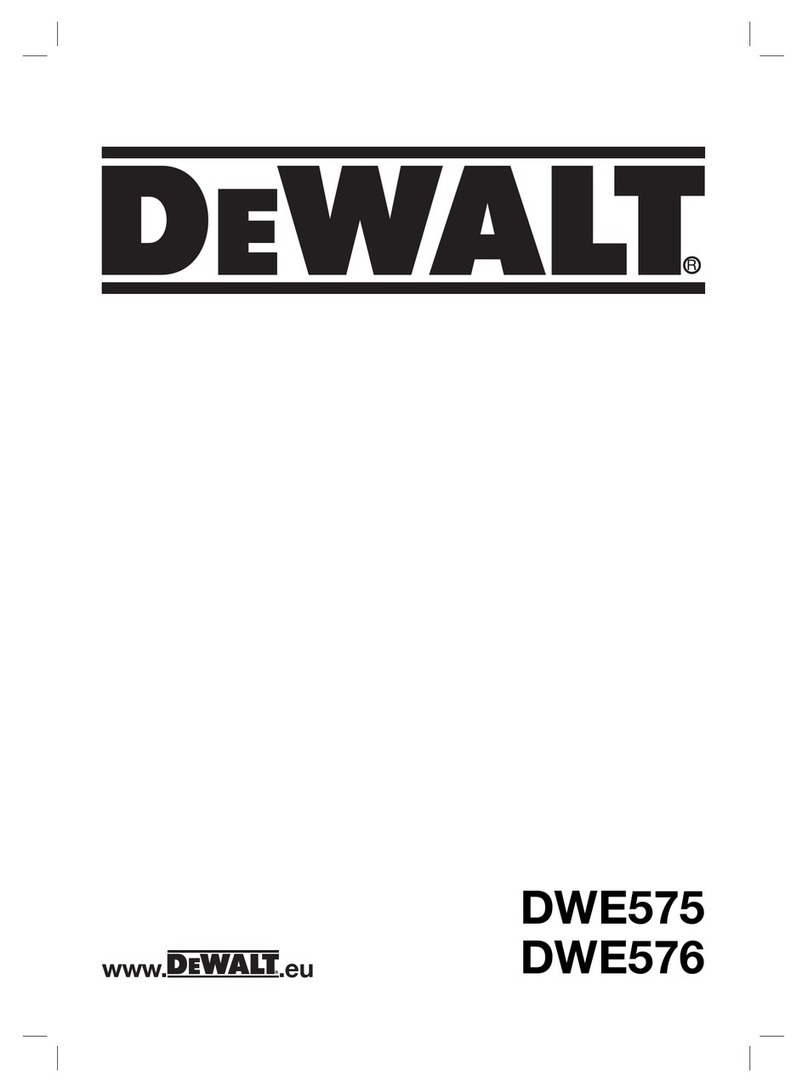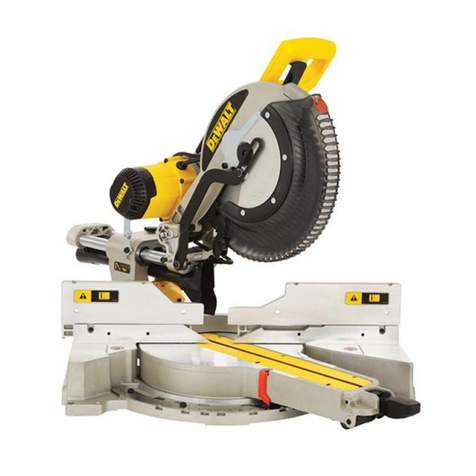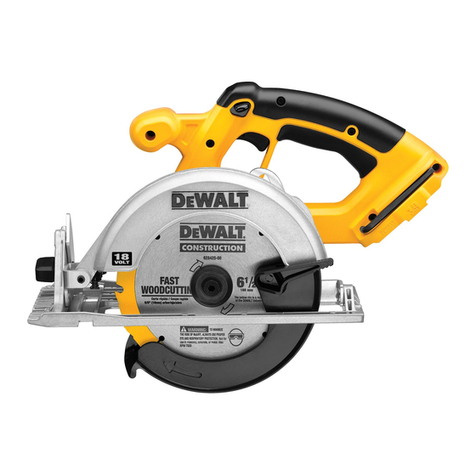
8
ENGLISH
GENERAL POWER TOOL SAFETY WARNINGS
WARNING: Read all safety warnings, instructions, illustrations
and specifications provided with this power tool. Failure to follow
all instructions listed below may result in electric shock, fire and/or
serious injury.
WARNING: To reduce the risk of injury, read the
instructionmanual.
Definitions: Safety Guidelines
The definitions below describe the level of severity for each signal word.
Please read the manual and pay attention to thesesymbols.
DANGER: Indicates an imminently hazardous situation which, if not
avoided, will result in death or seriousinjury.
WARNING: Indicates a potentially hazardous situation which, if not
avoided, could result in death or seriousinjury.
CAUTION: Indicates a potentially hazardous situation which, if not
avoided, may result in minor or moderateinjury.
NOTICE: Indicates a practice not related to personal injury which,
if not avoided, may result in propertydamage.
Denotes risk of electricshock.
Denotes risk offire.
The vibration and/or noise emission level given in this information sheet has
been measured in accordance with a standardised test given in EN62841
and may be used to compare one tool with another. It may be used for a
preliminary assessment ofexposure.
WARNING: The declared vibration and/or noise emission level
represents the main applications of the tool. However if the tool is
used for different applications, with different accessories or poorly
maintained, the vibration and/or noise emission may differ. This may
significantly increase the exposure level over the total workingperiod.
An estimation of the level of exposure to vibration and/or noise should
also take into account the times when the tool is switched off or when
it is running but not actually doing the job. This may significantly
reduce the exposure level over the total workingperiod.
Identify additional safety measures to protect the operator from
the effects of vibration and/or noise such as: maintain the tool
and the accessories, keep the hands warm (relevant for vibration),
organisation of workpatterns.
EC-Declaration of Conformity
Machinery Directive
Mitre Saw
DWS727
declares that these products described under Technical Data are
in compliance with:
2006/42/EC, EN62841-1:2015/AC:2015; EN62841-3-9:2015 + AC:2016 +
A11:2017.
These products also comply with Directive 2014/30/EU and 2011/65/EU. For
more information, please contact
at the following address or refer
to the back of themanual.
The undersigned is responsible for compilation of the technical file and
makes this declaration on behalf of
.
Markus Rompel
Vice-President Engineering, PTE-Europa
, Richard-Klinger-Straße 11,
D-65510, Idstein, Germany
31.05.2019
DWS727
Voltage VAC 230
UK & Ireland VAC 115
Type 1
Power input W1675
Blade diameter mm 250
Blade bore mm 30
Blade body thickness mm 1.75
Max. kerf of the blade mm 3.0
Max. blade speed min-1 4000
Max. cross-cut capacity 90° mm 305
Max. mitre capacity 45° mm 215
Max. depth of cut 90° mm 90
Max. depth of bevel cross-cut 45° mm 50
Mitre (max. positions) left 50°
right 60°
Bevel (max. positions) left 49°
right 49°
0° mitre
Baseboard max. height 150 mm mm 28
Resulting width at max. height 90 mm mm 290
Resulting height at max. width 305 mm mm 77
45° mitre left
Resulting width at max. height 90 mm mm 200
Resulting height at max. width 210 mm mm 77
45° mitre right
Resulting width at max. height 90 mm mm 200
Resulting height at max. width 210 mm mm 77
45° bevel left
Resulting width at max. height 60 mm mm 290
Resulting height at max. width 305 mm mm 50
45° bevel right
Resulting width at max. height 28 mm mm 290
Resulting height at max. width 305 mm mm 20
Automatic blade brake time s< 10
Weight kg 22
Noise values and/or vibration values (triax vector sum) according to EN62841-3-9:
LPA (emission sound pressure level) dB(A) 92.7
LWA (sound power level) dB(A) 106.3
K (uncertainty for the given sound level) dB(A) 3
Congratulations!
You have chosen a
tool. Years of experience, thorough product
development and innovation make
one of the most reliable
partners for professional power toolusers.
Technical Data
English (original instructions)
MITRE SAW
DWS727
